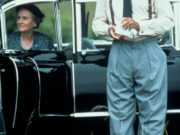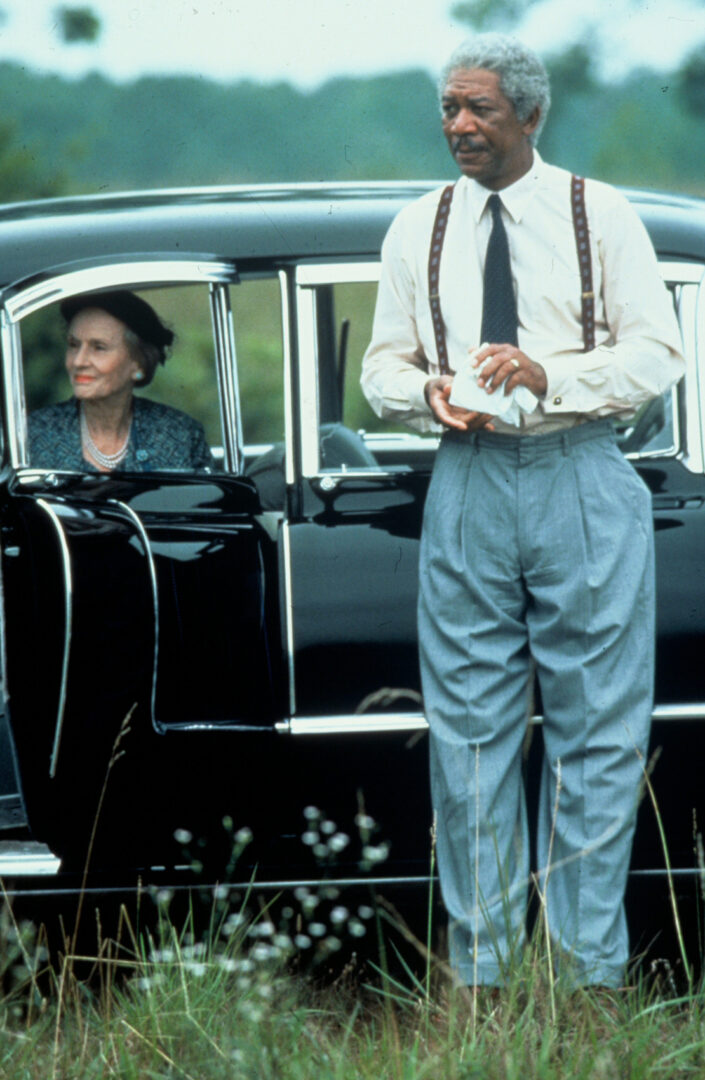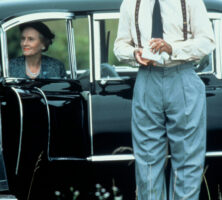The play Driving Miss Daisy had its New York premiere on April 15, 1987, off Broadway at the Studio Theater at Playwrights Horizons. Written by Alfred Uhry
Characters, Setting, and Plot
Driving Miss Daisy is set in Atlanta, Uhry’s hometown. Spanning a quarter of a century, from 1948 to 1973, the action takes place before, during, and after the civil rights movement. The plot centers on two characters, an elderly Jewish widow named Miss Daisy Werthan and her African American driver, Hoke Colburn. Although the story was inspired by Uhry’s grandmother Lena Fox and her chauffeur, Will Coleman, the characters are universal figures that appeal to a wide audience.
At the beginning of the play, Hoke is hired by Miss Daisy’s son, Boolie, who has become concerned about his aging mother’s driving abilities. The proud Miss Daisy resents Hoke’s presence, as she believes that he will do nothing but sit around, take up space, eat her food, and run up her phone bill. Concerned about appearances, Miss Daisy is also terrified that her neighbors will consider her a snob because she has a chauffeur to drive her around town. Hoke persists, however, and soon Miss Daisy is not only tolerating the kindly man but also accepting him as a friend. By the end, the proud, elderly, and frail woman, confined to a nursing home, tells Hoke that he is her best friend, and she allows him to spoon-feed her when she is unable to eat on her own.
Both the theatrical and film versions of Driving Miss Daisy were written by Uhry and are similar, but some differences are evident. The play includes only three characters, Miss Daisy, Hoke, and Boolie, and the set is very simple, utilizing two stools to represent the car in which much of the dramatic action takes place. The play consists of a series of vignettes, with the passage of time revealed in the actors’ mannerisms and by topical references, as well as by set and costume changes. The movie, by contrast, was filmed in and around Atlanta and features such locations as Druid Hills, Lullwater Road, Agnes Scott College, and The Temple. Characters who are only mentioned in the play, including Boolie’s wife and Miss Daisy’s cook, were given roles in the film, and all of the characters were enhanced and expanded to allow for more insight into their lives and environment.
Themes and Critical Reception
The personal and social conflicts of its characters are at the heart of Driving Miss Daisy. These conflicts result mainly from the mixture of southern and Jewish cultures, a theme about which Uhry, himself a southern Jew, often writes. The play is cast against the background of the civil rights movement in Atlanta, and many of the tensions that mark the developing relationship between Hoke and Miss Daisy reflect the world that is changing around them. As Hoke begins to test and push the boundaries of his social and working relationship with Miss Daisy, she begins to realize not only her own prejudices, but also those of the mainstream Christian community in which she lives.
Miss Daisy also experiences conflicts with Boolie that further illustrate the theme of change within the South. As a representative of the “Old South” and its traditions, Miss Daisy is highly resistant to change. Boolie, by contrast, is a shrewd businessman who, along with his wife, exemplifies the transformation of the South from an agrarian to an industrial culture. He owns all of the latest technology, including intercom systems in his store, decorative Christmas lights at his house, and a hi-fi stereo system from which he blasts music that the whole neighborhood hears. Boolie constantly tries to push this newer, more technologically advanced way of life on his mother, who refuses it all.
The critical reception of Driving Miss Daisy has been mixed. While some reviewers found the work a “touching tribute to friendship and human dignity” and praised its subtle and subversive portrayal of the civil rights movement and racial prejudice, others criticized its romanticized and overly simplistic portrayal of a relationship between a rich white woman and her Black employee. Nonetheless, the play and the film have both been popular with audiences, and the story is prominently identified with the South and its culture.






